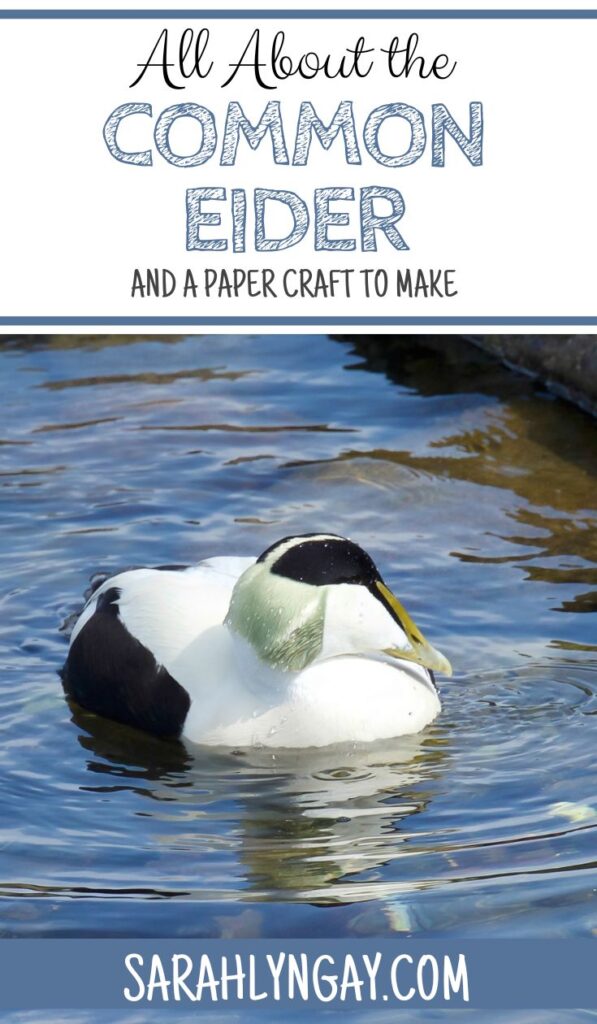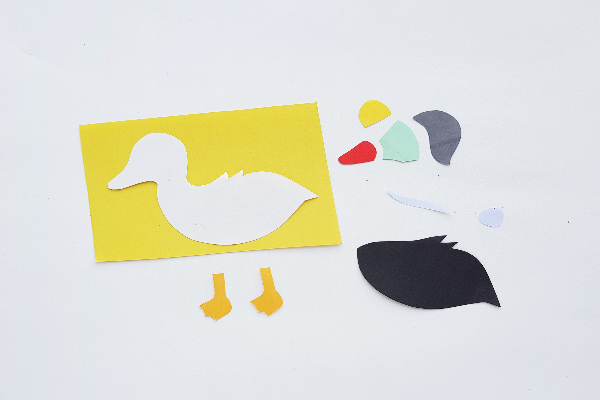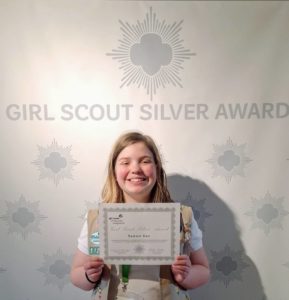The Common Eider is a large seabird that can be found in coastal areas of the northern hemisphere. Eiders are easily recognized by their black-and-white plumage and their large, orange bill. These birds are interesting not only for their unique appearance but also for their behavior.

For example, did you know that eiders are the only bird species known to use tools? Keep reading to learn more fascinating facts about the Common Eider!
Appearance
As previously mentioned, Common Eiders are easily recognizable due to their black-and-white plumage. Male eiders have mostly white feathers, while females and juveniles have more dark feathers. Both males and females have a patch of black feathers on their backs, which is where their scientific name, Somateria mollissima, comes from—mollissima means “softest” in Latin.
Common Eiders can grow to be quite large, with a length of up to 27 inches and a wingspan of up to 42 inches. Males are typically larger than females, but there is not a significant size difference between the two sexes. The Common Eider is the largest member of the duck family.
Behavior
Eiders are social birds and often live in large groups called rafts. These groups can contain hundreds or even thousands of birds! Rafts will formation during breeding season so that the males can better protect their mates and offspring from predators. Outside of breeding season, eiders will often form mixed-sex flocks that can include other types of ducks and seabirds.
Eiders are known to be very good swimmers and frequently dive underwater in search of food. Their diet consists mostly of shellfish such as clams, crabs, and mussels. To open these hard-shelled animals, eiders will use small rocks or tools such as sticks. This behavior makes them the only bird species known to use tools!
Another interesting behavior of eiders is something called “stereo preening.” This is when two birds preen each other’s feathers using their beaks. Stereo preening helps keep the birds’ plumage waterproof and also strengthens the social bonds between them.
Range and Habitat
The Common Eider is found in coastal regions of North America, from Alaska to Newfoundland. These birds are most commonly found near bodies of water, such as lakes, ponds, or the ocean. In the winter, they will migrate south to find open water where they can feed.
Diet and Feeding Habits
The Common Eider feeds mainly on mollusks, but will also eat crustaceans and small fish. To find food, they will use their strong beaks to pry open shells or dig in the sand. They will often swallow pebbles to help grind up their food.
Nesting and Reproduction
Common Eiders form large colonies to nest. The female will build a nest out of vegetation near the water’s edge and line it with down feathers. She will lay 3-5 eggs, which incubate for about 26 days. Both parents care for the ducklings until they are old enough to fend for themselves.
Common Eider Paper Craft Activity
Let’s make something fun that helps round out this lesson!

List of Supplies:
- Colored craft papers
- Popsicle sticks
- Googly eyes
- Pen or marker
- Pencil
- Scissors

Instructions:
Step 1:
Print and cut out the template patterns. Each pattern includes the color of the craft paper to trace on. Trace the template patterns on the marked colored papers and cut them out nicely.

Step 2:
Take the 2 feet patterns and attach them on the bottom side of the main body pattern of the common eider.

Step 3:
Grab the black pattern and attach it on the main body pattern by matching the sides of both patterns. Attach the 2 small patterns (circular and strip) on the black pattern; near the back side.

Step 4:
Attach the green pattern on the lower side of the head part (of the main body).

Step 5:
Attach the yellow pattern on the top side of the head part.

Step 6:
Attach the grey pattern on the back side of the head part and the beak (red pattern) on the beak part of the main body pattern.

Step 7:
Use a black pen to trace lines between the green, grey and yellow patterns. Attach the googly eye on the joint point of the grey, yellow and green pattern.

Step 8:
Attach your eider papercraft ton a popsicle stick to complete the craft.

Final Thoughts:
There’s a lot to love about the Common Eider! These fascinating birds are interesting to look at and fun to learn about. If you’re ever lucky enough to spot one in the wild, take a moment to appreciate these amazing creatures!

What Visiters Had To Say